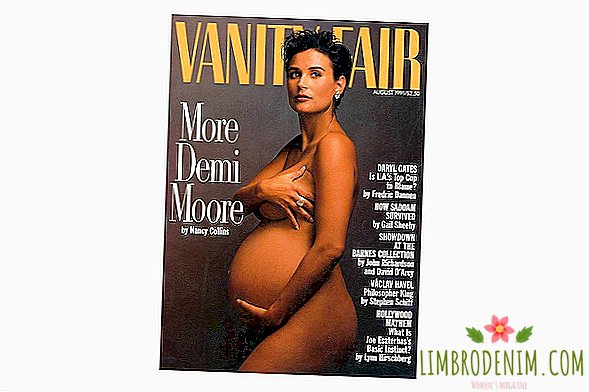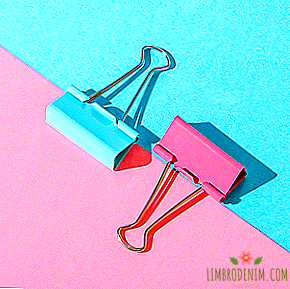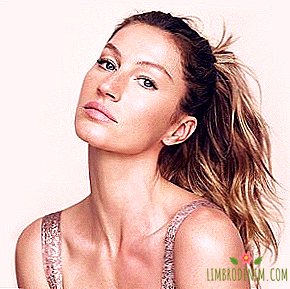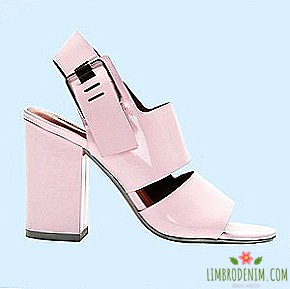Baby Bump: How pregnancy became fashionable
LET'S BE HONEST: FASHION TILL THE RECENT TIME was not particularly supportive of pregnant women. Or rather: it was worth the average woman to find herself in a position that, like any concept relating to the field of fashion, automatically disappeared from her everyday life, but in the closet dimensionless loose overalls and stretched knitted trousers suddenly materialized. This concerned all, without exception, representatives of society, both rich and privileged, and those who are poor and depressed. However, against the background of the fact that in the Victorian era pregnant women were prescribed to wear a corset that constricts the belly, even such a dull balance that had existed for almost the entire last century, seems to be quite a noticeable step towards universal humanization.

Lucile Ball, the star of the comedy series “I Love Lucy,” aired on American television in the 50s, is considered to be the first woman who has publicly “lived” on the screen and in real life. Ball officially announced that she was expecting a child, and continued to work on the set - an act at that time incredibly brave and anti-tourist. But although the pregnant wardrobe of the actress included a lot of clothing options for any occasion, nevertheless, the main functionality of all these things consisted only in maximally disguising her growing roundness.
After almost thirty years, little has changed: the recognized fashion icon of the 80s and the lover of flashy clothes Princess Diana led a rather tumultuous social life during both her terms, but all her “pregnant” dresses without exception were tailored so as to keep the secret about the changed proportions of their mistress: in their styles there was not a single hint of fitting or cuts.
Changes began with the flourishing of the third wave of feminism and in connection with the general course towards de-stigmatization of female sexuality. At the end of the 80s, Gela Taylor and Pamela Skaist-Levy (the future founders of Juicy Couture) launch a denim line for pregnant women called Trevis Jeans. Adherents of the brand instantly become the inhabitant of Hollywood: Melanie Griffith and Demi Moore appear in these jeans, complete with skin-tight tops and bodysuits, even on the red carpet.
In 1991, Vanity Fair comes out with Demi Moore, pregnant with a second child and completely naked on the cover. The number gets forever scandalous status, and at some points of sale the magazine is sold with an additional protective slip in order to avoid popular discontent. This does not stop other celebrities from taking such a step. Over the next two decades, Cindy Crawford, Claudia Schiffer, Monica Bellucci and Britney Spears are removed for the covers of various editions of nude. Pregnant women Pamela Anderson, Elle Macpherson and Victoria Beckham begin to choose only tight-fitting and bold dresses as dresses for the red carpet, emphasizing their physical condition in every possible way.
One gets the feeling that the order list has been lowered from above: from now on, the pregnancy should cease to be associated with something shameful, indecent and at the same time intimate, with something that needs to be hidden from prying eyes. A woman in the position is the object of universal worship, admiration and irrepressible interest, not least from the fashion community. The process of emancipation is finally legitimized by the mid-2000s, when it becomes clear that the rules regarding maternity style stop working and now everything is possible. M.I.A. Speaking at the 2009 Grammy Awards ceremony with a huge belly covered in transparent elastic, pregnant Miranda Kerr participates in the Balenciaga Spring-Summer 2011 show as an ordinary model, and Kim Kardashian in her custom-made Givenchy dress becomes the most discussed participant of Met Gala - 2013

By the mid-2000s, Gap, H & M and ASOS appear in maternity clothing lines, and the theme of pregnancy is so closely related to fashion that in 2012 Drake University professor René Ann Kramer even writes an essay "The Baby Bump is the New Birkin", which details the process of approving pregnancy as a fashionable phenomenon.
At the same time, the newest vector in the development of fashion for pregnant women fully coincides with the direction in which the main fashion avant-garde moves. No one else requires women to hide their stomachs and always dress in special clothes for those who are in the position (although continue, if you like it, feel free to continue), as no one else needs to follow certain specific trends in the big fashion For each there is a role model.
For example, Beyonce, who raised her last pregnancy to the rank of cult, sacralized her and almost literally made her pray to herself. Or, say, the idea of completely refusing to buy things for pregnant women - she also has many supporters.
Firstly, this is facilitated by a well-established fashion for super-volume silhouettes and styles. In the latest issue of Gentlewoman magazine with designer Martin Rose, who is on an impressive gestational age, quite lucidly illustrates this tendency: in the photographs, the girl convincingly demonstrates how comfortable she feels in her position in the hypersize things of her own brand Martine Rose.
Secondly, this is reflected in the reluctance of many women to remain apart from their careers for a long time. As a graphic example, Amal Clooney is often remembered, which did not change the recognizable business style and even walked on during high-heel pregnancy, which until recently was considered an absolute taboo for women in the position. At the other fashion pole are the pregnant Irina Shayk, who passed on the catwalk at the Victoria Secret show a year ago, Kim Kardashian and Krissy Teigen with their most sexyized, verge of vulgarity, feeding their own pregnancy. Lace, mini, tight dresses, bandages - well, in 2017, the idea of a woman as a vessel of eternal femininity and a goddess of fertility also takes place and does not at all interfere with the ideas of feminism and diversity. It is quite obvious that these girls successfully and confidently feel in the status of guides of this concept.
It is worth attention and the fact that the publication of pictures of naked and pregnant celebrities (remember at least Serena Williams on the cover of the August Vanity Fair) magazines no longer tend to shock the public. Like numerous “naked” selfies of pregnant stars on instagram, such visual material is rather a documentary fixation of the moment, and of course, another reason for talking about diversity, a positive attitude to your own body and the position of a woman in this new, very interesting world in which 50-year-old Janet Jackson was able to become a mother for the first time in her life.
PHOTO: Beyonce





